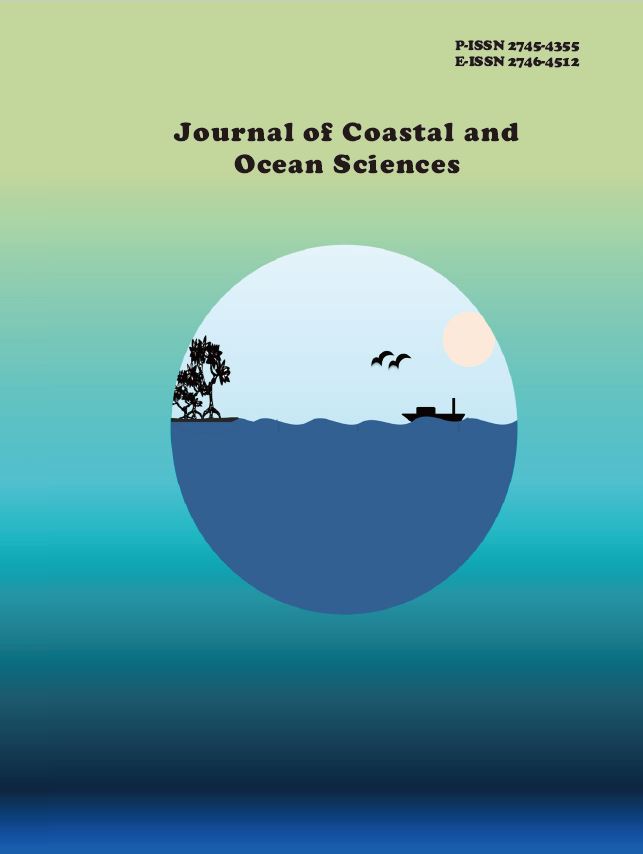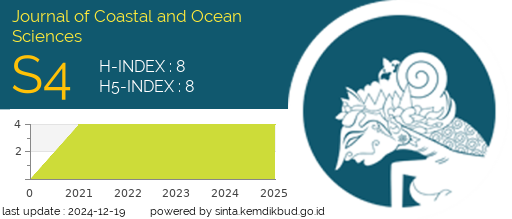Identification of Microplastic Type and Abundance in East Coast of Karimun Besar Island, Riau Islands
DOI:
https://doi.org/10.31258/Keywords:
Karimun Besar Island abundance of microplastics Sea WaterAbstract
High anthropogenic activities on the east coast of Karimun Besar Island contribute a certain amount of wastes, especially plastics. Plastics will be degraded due to the natural mechanism of smaller parts and known as microplastics. Small size and widespread distribution has caused microplastics can be found widely in the ocean and coastal areas. This study was conducted in March 2020, located on the east coast of Karimun Besar Island, Province of Riau Islands. The purpose of this study was to know the presence of microplastics in its coastal water. The method used in this study was a survey method by taking samples from four stations with suspected different anthropogenic activities. The results showed that the lowest abundance of microplastics in the coastal waters of the east coast of Karimun Besar Island was 63,33 particles/m3 and the highest was 161,66 particles/m3, with the dominant type found was fibre. The abundance of the microplastic between station was found to be significantly different (p < 0,05).
Downloads
References
[NOAA] National Oceanic and Atmospheric Administration. (2013). Programmatic Environmental Assessment (PEA) for the NOAA Marine Debris Program (MDP). Maryland (US): NOAA. 168p
Amin, B., Efriyeldi and I. Nurrachmi. (2000). Kandungan logam berat Pb, Cu dan Zn di perairan Teluk Pelambung Kabupaten Karimun, Riau. Hal. 24 – 32. Prosiding Seminar Hasil Penelitian Dosen Universitas Riau Tahun 2000. Universitas Riau Pekanbaru.
Carr, A. (1987). Impact of nondegradable marine debris on the ecology and survival outlook of sea turtles. Marine Pollutant. Bullets. 18 (6B), 352-356.
Dewi, S. I., A.A. Budiyarsa, dan I.R. Ritonga. (2015). Distribusi mikroplastik pada sedimen di muara badak, Kapupaten Kutai Kartanegara. Jurnal Depik, 4(3): 121-131.
Dyachenko, Michell and Arsem. (2017). Extraction and identification of microplastic particles from secondary wastewater treatment plant (WWTP) effluent Journal. Royal Society of Chemisty.
Fry, D.M., S.I. Fefer, and L. Sileo. (1987). Ingestion of plastic debris by Laysan albatrosses and Wedgetailed Shearwaters in the Hawaiian Islands. Mar. Pollut. Bull. 18 (6B), 339-343.
Galgani, F. (2015). The Mediterranean Sea: From litter to microplastics. Micro 2015: Book of abstracts.
Nor, M., and J.P. Obbard. (2014). Microplastics in Singapore’s coastal mangrove ecosystems. Marine Pollution Bulletin, 79(1/2):278–283.
Rachmat, S.L.J., N.P. Purba, M.K. Agung, dan L.P. Yuliadi. (2018). Karakteristik sampah mikroplastik di Muara Sungai DKI Jakarta. Depik Jurnal Ilmu-Ilmu Perairan, Pesisir dan Perikanan, 8(1): 9-17.
Sianturi, K.P.T., B. Amin, dan M. Galib. 2021. Microplastic Distribution in Sediment in Coastal of Pariaman City, West Sumatera Province. Asian Journal of Aquatic Sciences, 4(1): 73-79.
Tanković, M.S., V.S. Perusco, J. Godrijan, M. Pfannkuchen (2015). Marine plastic debris in the northeastern Adriatic. Micro 2015: Book of abstracts.
Virsek M.K., A. Palatinus, S. Koren, M. Peterlin, A. Krzan. (2016). Protocol for Microplastics Sampling on the Sea Surface and Sample Analysis. Journal of Visualized Experiments, 118: 55161.






